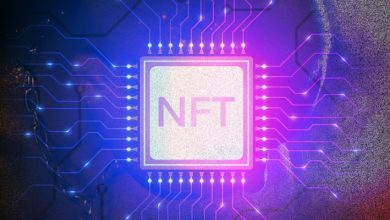Blockchain Solutions for Public Health and Safety

- Understanding the basics of blockchain technology
- Benefits of implementing blockchain in public health and safety
- Challenges and limitations of using blockchain in healthcare
- Real-world examples of blockchain solutions in public health
- Ensuring data security and privacy in blockchain applications
- Future implications of blockchain for public health and safety
Understanding the basics of blockchain technology
Blockchain technology is a decentralized, distributed ledger system that securely records transactions across a network of computers. Each block in the chain contains a number of transactions, and every time a new transaction occurs, a record of that transaction is added to every participant’s ledger. This creates a transparent and immutable record of all transactions, making it highly secure and resistant to tampering.
One of the key features of blockchain technology is its use of cryptographic algorithms to secure the data stored within each block. This ensures that the information is protected from unauthorized access and maintains the integrity of the data. Additionally, the decentralized nature of blockchain means that there is no single point of failure, making it highly resilient to cyber attacks and other forms of manipulation.
Blockchain technology also enables smart contracts, which are self-executing contracts with the terms of the agreement directly written into code. These contracts automatically execute when certain conditions are met, streamlining processes and reducing the need for intermediaries. This can be particularly useful in public health and safety applications, where time-sensitive actions are required.
By leveraging blockchain technology, public health and safety organizations can improve data integrity, increase transparency, and enhance security. This can lead to more efficient processes, better resource allocation, and ultimately, improved outcomes for the community. As the technology continues to evolve, its potential for revolutionizing the way we approach public health and safety issues becomes increasingly clear.
Benefits of implementing blockchain in public health and safety
Implementing blockchain technology in public health and safety can bring numerous benefits to the sector. By utilizing blockchain solutions, organizations can enhance data security, improve transparency, and streamline processes. Let’s explore some of the advantages of integrating blockchain in public health and safety:
- Enhanced data security: Blockchain technology offers a secure and decentralized way of storing and managing data. This can help protect sensitive information such as patient records, vaccination data, and emergency response protocols from cyber threats and unauthorized access.
- Improved transparency: Blockchain provides a transparent and immutable ledger that can track the flow of information and resources within the public health and safety ecosystem. This visibility can help stakeholders identify inefficiencies, prevent fraud, and ensure accountability.
- Streamlined processes: By automating processes through smart contracts and decentralized applications, blockchain can help public health and safety organizations reduce administrative burdens, minimize paperwork, and improve overall efficiency. This can lead to faster response times during emergencies and better resource allocation.
- Interoperability: Blockchain technology can facilitate interoperability among different health and safety systems, enabling seamless data sharing and collaboration between various stakeholders. This can lead to more coordinated responses to public health crises and better communication among agencies.
- Cost savings: By eliminating intermediaries, reducing administrative costs, and minimizing errors, blockchain can help public health and safety organizations save money in the long run. This can free up resources to invest in improving services and infrastructure for the benefit of the community.
Challenges and limitations of using blockchain in healthcare
Despite the numerous benefits of using blockchain technology in healthcare, there are several challenges and limitations that need to be considered.
- One of the main challenges is the issue of scalability. Blockchain networks can become slow and inefficient when they have to handle a large number of transactions, which can be a significant problem in a healthcare setting where data needs to be processed quickly and efficiently.
- Another challenge is the lack of standardization and interoperability. Different healthcare organizations may use different blockchain platforms or protocols, making it difficult to share and access data across different systems.
- Security and privacy concerns are also a major limitation of using blockchain in healthcare. While blockchain technology is known for its security features, there is still a risk of data breaches and unauthorized access to sensitive health information.
- Regulatory compliance is another challenge that healthcare organizations face when implementing blockchain solutions. There are still many legal and regulatory issues surrounding the use of blockchain in healthcare, which can make it difficult to ensure compliance with data protection laws.
- Finally, the cost of implementing blockchain technology in healthcare can be prohibitive for some organizations. The initial investment required to set up a blockchain network, as well as the ongoing maintenance costs, can be a barrier to adoption for many healthcare providers.
Real-world examples of blockchain solutions in public health
Blockchain technology has been increasingly utilized in the public health sector to address various challenges and improve overall efficiency. There are several real-world examples of blockchain solutions being implemented to enhance public health and safety:
- **Supply Chain Management**: One of the key applications of blockchain in public health is in managing the supply chain of pharmaceuticals and medical supplies. By using blockchain, the entire supply chain can be tracked transparently and securely, reducing the risk of counterfeit products entering the market.
- **Health Records Management**: Blockchain can also be used to securely store and manage health records, ensuring that sensitive patient information is protected from unauthorized access. This can help healthcare providers access accurate and up-to-date patient data, leading to better treatment outcomes.
- **Disease Surveillance**: Blockchain technology can facilitate real-time tracking and monitoring of disease outbreaks, allowing public health authorities to respond quickly and effectively to potential health crises. This can help prevent the spread of infectious diseases and save lives.
- **Clinical Trials**: Another application of blockchain in public health is in managing and verifying clinical trial data. By recording trial results on a blockchain, researchers can ensure data integrity and transparency, ultimately leading to more reliable research outcomes.
These are just a few examples of how blockchain solutions are revolutionizing public health and safety. By leveraging the transparency, security, and immutability of blockchain technology, public health organizations can streamline operations, improve data management, and ultimately enhance the well-being of individuals and communities.
Ensuring data security and privacy in blockchain applications
Ensuring the security and privacy of data in blockchain applications is essential to maintain public trust in the technology. By implementing robust encryption protocols and access controls, blockchain solutions can protect sensitive information from unauthorized access or tampering. Additionally, the use of private keys and digital signatures can further enhance data security by ensuring that only authorized parties can access or modify the information stored on the blockchain.
In the context of public health and safety, maintaining data security and privacy is of paramount importance to safeguard sensitive information such as medical records, vaccination histories, and emergency response protocols. Blockchain technology offers a decentralized and transparent platform for storing and sharing this information securely, without the need for intermediaries or centralized data repositories.
To enhance data security and privacy in blockchain applications for public health and safety, organizations must also adhere to regulatory compliance requirements such as HIPAA and GDPR. By implementing these standards and guidelines, organizations can ensure that the personal information of individuals is protected and that data breaches are minimized.
In conclusion, ensuring data security and privacy in blockchain applications is crucial for maintaining public trust and confidence in the technology. By implementing robust encryption protocols, access controls, and regulatory compliance measures, organizations can safeguard sensitive information and enhance the overall security of public health and safety systems.
Future implications of blockchain for public health and safety
Looking ahead, the future implications of blockchain for public health and safety are vast and promising. The use of blockchain technology has the potential to revolutionize the way data is stored, shared, and secured in the healthcare sector, leading to improved efficiency, transparency, and trust.
One of the key benefits of blockchain in public health is its ability to securely store and manage sensitive health information. By utilizing blockchain’s decentralized and immutable nature, healthcare organizations can ensure that patient data is protected from unauthorized access and tampering.
Furthermore, blockchain can streamline processes such as medical record management, drug supply chain tracking, and disease surveillance. This can lead to faster response times during emergencies, more accurate diagnoses, and better overall public health outcomes.
Another important aspect of blockchain in public health is its potential to enhance data interoperability among different healthcare systems. By using blockchain to create a unified and standardized data exchange platform, healthcare providers can easily access and share relevant patient information in real time, regardless of the system they are using.
In conclusion, the integration of blockchain technology in public health and safety has the potential to bring about significant improvements in data management, security, and interoperability. As the technology continues to evolve and gain wider acceptance, we can expect to see a more connected, efficient, and secure healthcare ecosystem that ultimately benefits individuals and communities alike.



